

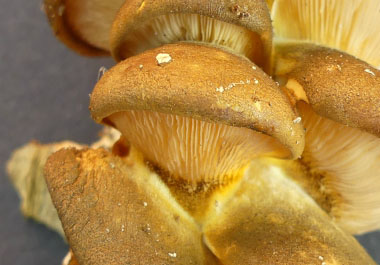
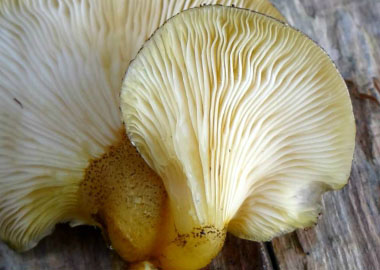
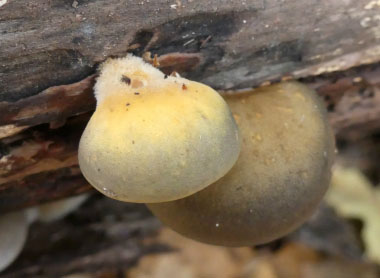

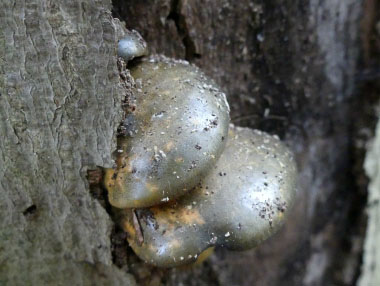
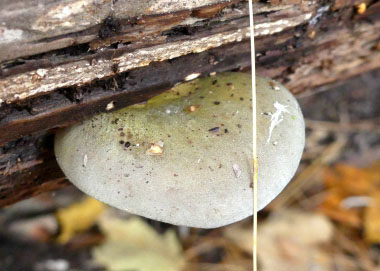
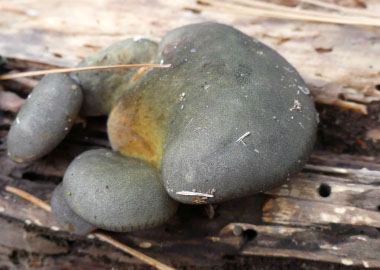
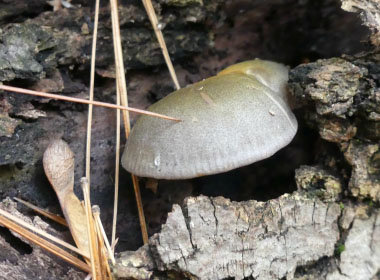
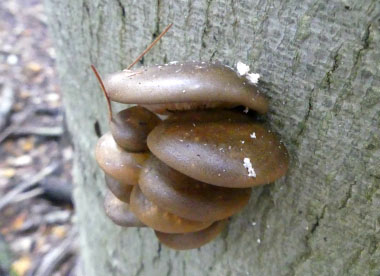
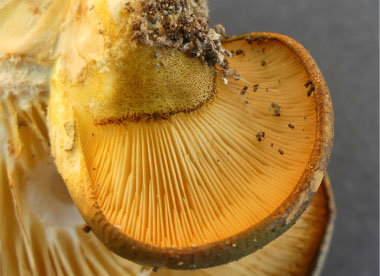
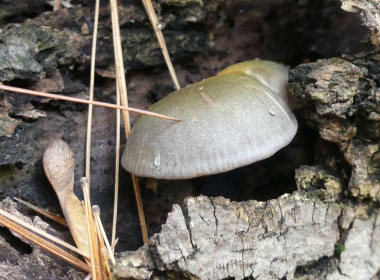
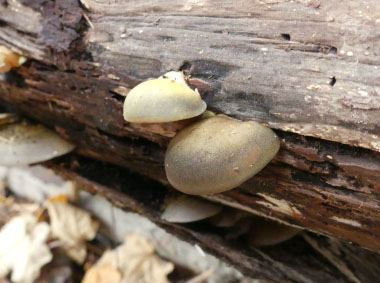
Do not eat any fungi that has not been properly identified by a qualified professional, some are DEADLY when ingested. All edible wild fungi MUST be cooked.
Late fall oysters are often referred to as being the harbinger of the end of the mushroom season in late fall or winter depending on the geographic location. They tend to fruit in groups, either in clusters or single. Late fall oysters are reminiscent of the more common oyster mushrooms, yet their greenish colour sets them apart from the common oyster. They are also known as Panellus serotinus.
Type
Distinguishing Features
The flesh of the late fall oyster is whitish; tough and rubbery, and does not change colour when sliced. It has a sticky surface when fresh, and sometimes orangish-to-yellowish gills that develop brownish edges. These are easily spotted in the woods. Fruitbodies range from 2 to 10 cm across; are semi-circle or kidney-shaped often with a scalloped incurved margin; convex; slightly downy when young, becoming smoother with age. They typically have a stout stem, usually yellowish but sometimes light brown. Their slightly greenish colour sets them apart from other fungi and they have a slight yellowish colour where the cap meets the stem especially when young.
Height
Typically late fall oysters are quite short as their stem is lateral, stout, and up to about 2 cm long (and sometimes absent).
Habitat
This late fall saprobic mushroom is found in forests on the deadwood of hardwoods, usually on logs with bark still attached. It can occur on dead conifer as well but is more common on hardwood. This mushroom grows in many locations across Canada, the U.S., Europe, Asia and in New Zealand.
Spore Print
White to whitish.
Season
Late fall into winter depending on geographic location. Usually does not appear until the first frost.
Gills
Gills are adnate, crowded, and initially yellowish becoming browner with age. The gills radiate from the point of attachment.
Edibility
In Japanese culture late fall oysters, or mukitake, is considered a very popular edible mushroom although it is not as common in North America. It dries well and is a great addition in a hearty stew. Its bitter flavour lends itself well to robust sauces. Although considered edible, it is quite tough and must be cooked a long time over low heat.
Other Name
Olive Oysterling.
Recipes
To support our efforts please browse our store (books with medicinal info, etc.).
Winter Survival Food Handbook

PDF Plant Magazines
Types of Wild Food
Geographic Zones Seasons
Disclaimer
EdibleWildFood.com is informational in nature. While we strive to be 100% accurate, it is solely up to the reader to ensure proper plant identification. Some wild plants are poisonous or can have serious adverse health effects.
We are not health professionals, medical doctors, nor are we nutritionists. It is up to the reader to verify nutritional information and health benefits with qualified professionals for all edible plants listed in this web site. Please click here for more information.
Why Edible Wild Food?
- Food costs are rising
- Free, wild food is readily abundant
- Wild food adds nutrition to your diet
- Wild food can help treat various medical conditions





